by Cynthia Petito, OTR/L, ATP, CAPS
A Brief History
Custom molded seating for patients with significant joint and spinal deformities began in Canada and the United States in the late 1960s. In the 1970s, orthotic specialists and biomedicine engineers pioneered several types of custom molded seating options, including vacuum forming plastic around plaster molds, hand-carved foam and ply, molded plastic inserts (MPI), and rigid and semi-rigid polyurethane foam molds. Into the 1980s and 1990s, adjustable micro-modular seating (AMMS), foam-in-place molds (FIP), and CAD/CAM technology came into wide use. Today, both custom foam molds and AMMS methods are widely used in seating clinics throughout the United States.
Custom Foam Molds and Current Technologies
There are several systems on the market that produce custom foam molds made from vacuum-forming bags to capture shapes of mild to severe joint and spinal deformities. Once the shapes are captured, developing a 3D image using a digitizer or scanner allows the foam to be shaped accurately. There are several foams to choose from with each manufacture. Most common are soft, medium, and firm foams that are often layered for optimal support and pressure relief. Custom mold foams can be combined with custom gel or air inserts and overlays for added pressure relief when necessary. The latest technology in CAD/CAM systems includes a 3D scanner which offers easier and quicker imagery, more versatile scanning ranges, and multiple editing options. Foam-in-Place (FIP) mold technology itself has not changed.
However, the FIP option has become more widely available among several manufactures within their product line of prefabricated back shells. A FIP back and seat allows for a quick mold for those individuals with mild to moderate joint and spinal asymmetries.
Adjustable Micro Modular Seating (AMMS)
AMMS utilizes a flexible sheet of interlocking segments, which is molded around a client in a seated position. The segments can be loosened or tightened, or added or removed, during the molding process. This allows for changes to be made and correction in posture to be achieved. The molding process can occur via a direct fitting of the client or fabricated from a plaster cast mold.
The birth of AMMS began with a Canadian research project performed from 1975 to 1978 led by Dr Steve Cousins, aimed at creating a mass-producible universal orthotic/prosthetic body support system.1 At the Royal Hospital for Neurodisability in London, Cousins is in charge of Biomedical Engineering Services, which accommodates the seating and postural needs of clients with the most complex and severe long-term conditions. In the 1980s, custom molded seating research and development continued in Europe, where adjustable micro-modular seating systems and vacuum-forming support systems were being developed. In the 1990s, AMMS orthotic correction, known as “The Door Technique,” was developed in Sweden and the United Kingdom.
Current Terminology
I introduced the term “AMMS” in 2015 at the International Seating Symposium.2,3 While this was not the first time the adjustable custom molded seating concept was introduced into the United States, new terminology has evolved over the last 6 years. Here are some common terminologies I use when we choose to use custom foam molds and AMMS, and its theoretical concepts with my patients:
• Asymmetry: The lack of symmetry between body structures in a seated position. Postural asymmetries can occur due to gravity pulling on body structures and muscles, causing imbalance.
• Accommodate: To make fit in the shape of the body structure(s), particularly joint and spinal asymmetries when realignment or symmetry cannot be achieved.
• Intervene: To come between so as to prevent or alter a result or course of a joint or spinal deformity, causing an asymmetry of the body structures.
• Correctable: A means to remedy or counteract an asymmetry of the body structure(s), particularly joint and spinal deformities that are considered “flexible.”
• Non-Correctable: A means less likely to remedy or counteract an asymmetry of the body structure(s), particularly joint and spinal deformities that are considered “fixed.”
• Dynamic Custom Modular Seating: A custom seating system with flex for dynamic movement and vibration dampening, which can also be changed or modified to meet the needs of the individual.
• Early Intervention Modular Seating (EIMS): A custom modular seating system that promotes functional postural alignment for children, particularly those with neuromuscular diagnoses, to prevent the onset or progression of joint and spinal asymmetries. This type of seating system can be changed as the child grows and body structures change.
• Door Technique: Flexible hinged components (laterals) enabling orthotic spinal support and correction within the seating system. It includes a three-point support system using mechanical forces to achieve gradual correction of body structures.
Custom Foam Molds Versus AMMS—Theoretical Concepts
AMMS has been used for 40 years to meet unique clinical needs and provide therapeutic benefits that other custom systems on the market cannot provide. AMMS offers a custom dynamic seating system with the ability to provide not only shock absorption and flexibility, but can be modified and adapted to the changes in the body over time. Seating shape adjustments can be made without having to construct a whole new custom mold. The adjustments may be made due to growth, weight gain or loss, changes in spinal and joint deformities, and changes in sensation and skin integrity. AMMS offers two methods for fittings and adjustments: directly, while the individual is seated; or by constructing a plaster cast mold for capturing complex shapes.2 Because clinicians can see “through” the mold, there is instantaneous feedback.
Some other unique benefits of AMMS include improved airflow and moisture dissipation through the shell, providing ventilation.4 Individuals with respiratory impairments or difficulties regulating body heat may benefit from AMMS seating because it provides a breathable system. Modules can be removed or recessed for total off-loading of bony prominences or areas where skin injuries may be present. AMMS also offers custom foams, fabrics, and covers to meet individual needs.
Lastly, AMMS allows for gradual corrective positioning of joint and spinal asymmetries. Because most postural deformities occur over time, AMMS can provide a slow and gradual correction that involves ongoing adjustments and monitoring depending on the severity and complexity of the deformities.
New theoretical concepts in custom seating introduced in the US suggest the current definition Fixed vs Flexible spinal asymmetries and joint contractures, which include muscles, tendons, and joint structures, are now being considered clinically as Correctible vs Non-Correctible. Correctible suggests the asymmetry or deformity is still flexible and full correction may be achieved, whereas Non-Correctible suggests the deformity may still be somewhat flexible, but does not allow for full correction. Therefore, the current method to “accommodate” a deformity is now being reconsidered with the known research and clinical outcomes reported in the United Kingdom.
Cousins believes most asymmetries and deformities are not fixed, and with the proper corrective forces, a so-called fixed deformity may be corrected over time; although it may not be fully corrected. After my experience working with AMMS systems, I am in agreement with Cousins in his belief that not all “fixed” deformities are incapable of being corrected to some degree.
With children, AMMS can provide what I have termed Early Intervention Modular Seating (EIMS) concepts to assist in slowing, or even preventing spinal asymmetries. Early-Onset Scoliosis (EOS) is the curvature of the spinal column of more than 10 degrees and starts early in the child’s life, most commonly before the age of 5. Sometimes, another pathology exists which causes scoliosis (ie, congenital vertebral anomalies, problems of the muscles and nerves or brain). In cases where there is no clear underlying problem, the scoliosis may be identified as Idiopathic EOS. Others with slow progressive curves will be chosen to undergo brace or cast treatment.
Currently, many US healthcare clinics and hospitals state surgery is the only way to interfere with the course of progressive Early-Onset Scoliosis through Growing Rod surgery or VEPTR (Vertical Expandable Prosthetic Titanium Rod) procedures. However, this is not the methodology in other countries, such as the United Kingdom. In the United Kingdom, invasive surgeries like this are last resort.
In my experience, I have seen many children with neurological diagnoses who are placed in flat planar seating systems early on and into their teen years. As they grew, the flat backs and seat cushions did not support the developing spinal structure and facilitate normal curves of the spine. The result is the onset of postural deformities, including kyphosis, posterior pelvic tilt, and finally scoliosis to some degree at minimum.
Between 12 and 18 months of age, the lumbar spine is fully developed. By 4 to 5 years of age, the thoracic and cervical spinal curves are developing. Flat planar seating systems may cause positional asymmetries because the body structure simply accommodates the best it can over time within the existing seating system. For this reason, custom modular seating, such as AMMS, is valuable to children with neuromuscular diagnoses and can foster normal spinal development and spinal curves while inhibiting asymmetries.
Custom foam molds can offer similar benefits. However, the foam molds have limited ability to be modified after the foam is cut and shaped. Foam molds offer some adjustability by either removing or adding foam. If the individual grows or has significant changes in joint or spinal asymmetries, the foam mold mostly likely has to be remolded.
AMMS — The Door Technique
In 2007, Hans Candeborn, Cousins, and Rick Clarke published a preliminary report titled Spinal Orthotics Within Custom Seating?5 A new technique, which combines orthotic correction integrated into a custom molded seat (combines custom molded lateral “doors” to the seating system) became known as “The Door Technique.”
Summary
Custom foam molds have been used for individuals with complex seating needs for decades in an attempt to accommodate and slow the progression of joint and spinal deformities. The methodology of joint and spinal correction in the US is new and exciting. The prevention of scoliosis and correction of joint and spinal asymmetries will provide patients with better long-term healthcare benefits. It will also give providers and funding sources more cost-effective outcomes. RM
Cynthia Petito, OTR/L, ATP, CAPS, is co-founder of the CHAS Group HC Corp, a privately owned physical and occupational therapy practice serving Florida specializing in wheeled mobility, complex seating, assistive technology, home safety, and home modifications to keep individuals living independently in their home. For more information, contact [email protected].
References
1. Matrix Seating USA. History: I just want to sit properly. Available at: www.matrixseatingusa.com/about/history
2. Matrix Seating. A Brief History of Matrix. Available at: www.matrixseating.com/brief-history-matrix.php. Accessed October 20, 2017.
3. Petito C. The Global Evolution of Custom Molded Seating: New Options and Methodologies. International Seating Symposium. IC08. 2015.
4. Symmetric Designs. Free Form Seating. Full-Body Custom Seating in a Day. Available at: www.Symmetric-designs.com/free-form-seating
5. Candeborn H, Cousins S, Clarke R. Spinal Orthotics Within Custom Seating? 12th World Congress of the International Society for Prosthetics and Orthotics.Vancouver, Canada. 2007.

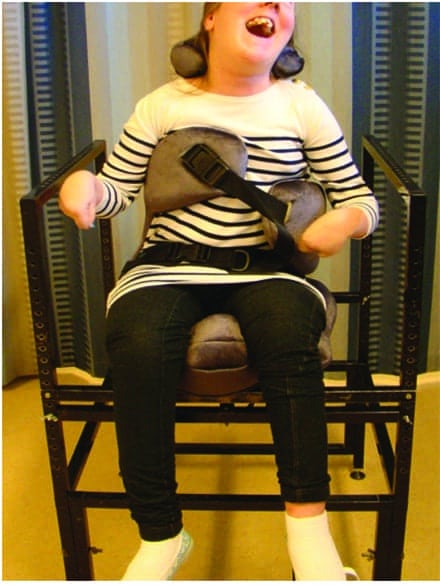
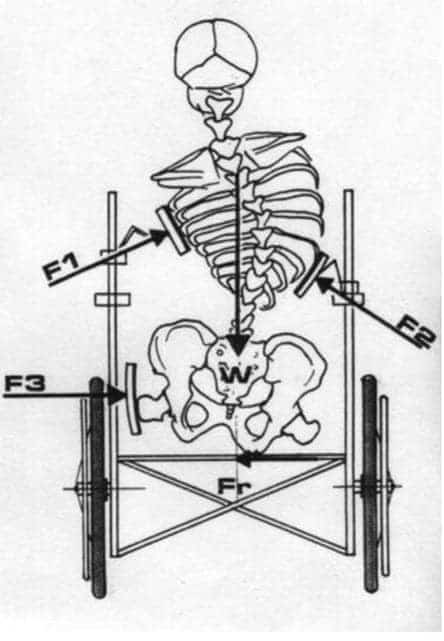
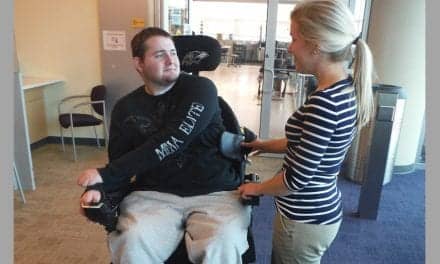

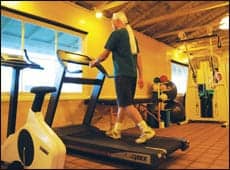
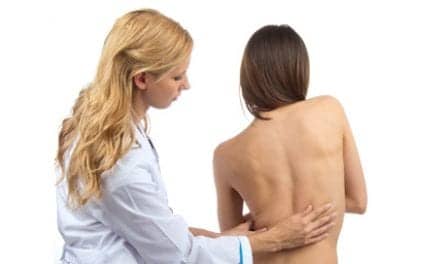
This is exciting work! I completely agree that distortions of the spine and rib cage can be improved over time by applying corrective forces. We are doing this at night using therapeutic positioning. I would be concerned that while using this approach during the day is great, destructive postures at night could impede progress. One step forward two steps back sometimes happens. Using both together could be amazing.